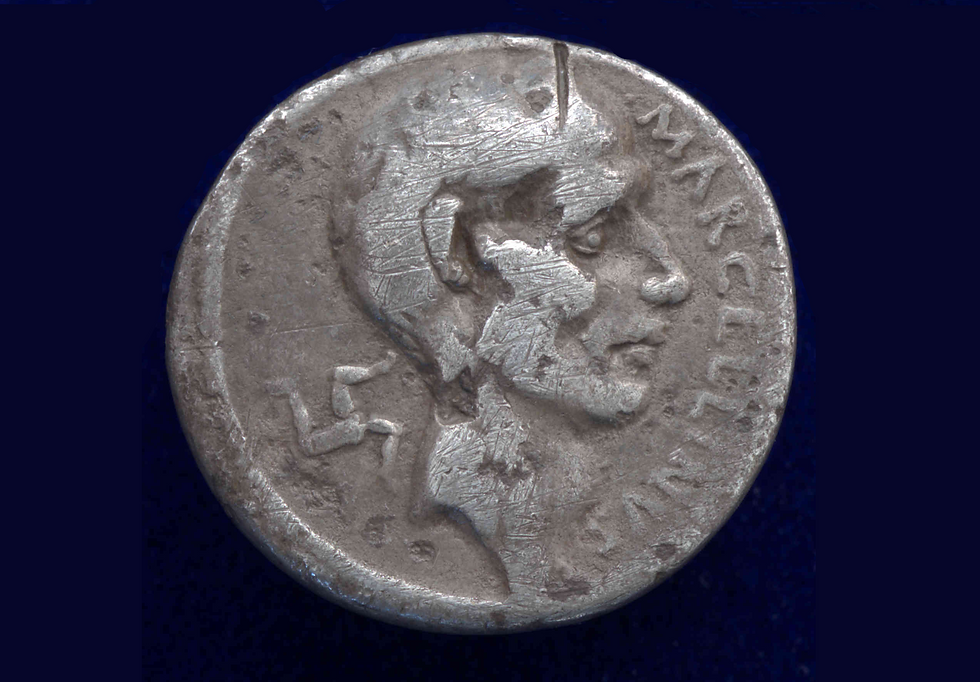Imitative Denarius of the Eravisci
- sulla80

- Feb 20
- 2 min read
Updated: Mar 2
The Eravisci were a Celtic tribe that settled in the region later known as Pannonia, corresponding broadly to parts of modern-day Hungary. Pliny the Elder mentions the Eravisci as one of the over people living in Pannonia along the Danube (Natural History 3.148) . Ptolemy in his Geographia, mentions that the Sava River (rising from the Cetius Mountain) flows northward and then eastward through both Pannonias until it meets the Danube, and the Eravisci (Aravisci) hold the northern reaches, while the Scordisci dwell to the south (Geographia 2).
Origins and Migration: Although exact details remain debated, many scholars suggest the Eravisci were originally from north of the Danube (trans-Danubian Celts) who migrated southward into Pannonia.
Major Settlements: By the 1st century BC, they appear to have established themselves near the site of Aquincum (modern-day Budapest), which later became a significant Roman legionary base and provincial capital.
Agriculture and Animal Husbandry
Like many Celtic and Pannonian groups, the Eravisci relied on farming (grain cultivation) and animal husbandry (cattle, sheep, and horses). The fertile lands along the Danube supported pastoral activities and crops for local consumption and for trade.
Trade with Rome
The Eravisci came into increasing contact with the Roman Republic (and later the Empire) through trade along the Danube corridor. They produced imitative coinage—often copying Roman Republican denarii. These imitative coins were practical for local exchange and suggests they were commercially and culturally tied to Roman monetary systems (Freeman 1998).
The Danube served as a major trade artery, connecting the Eravisci with other Celtic tribes and, crucially, with the Roman world. They engaged in craft production, particularly metalworking and pottery, which found markets both locally and in Roman territories.

Eravisci Imitative denarius on the left
Cn. Lentulus; 76-75 BC, Denarius, on the right
Obv: Genius of the Roman people right, GPR above
Rev: EX SC divided by globe, rudder and scepter, CN LEN Q below
Note: Other examples here; and another interesting paper on finds in Belarus and Ukraine.
Ref: same dies as Freeman 9

By the late 1st Century BC, with Rome’s expansion into the Danubian regions and conquest of Pannonia in the last decade BC, the Eravisci came under Roman rule. Aquincum became an important Roman military and administrative center in Pannonia.
References:
Freeman, R. D. 1998. “A Group of Eraviscan Denarii.” In Coins of Macedonia and Rome: Essays in Honour of Charles Hersh, edited by A. Burnett, U. Wartenberg, and R. B. Witschonke, 189–192. London: Spink.
Phil Davis, 2004-2009, Imitations of Roman Republican Denarii, Class B, Group II Pannonian, Eraviscan Page 1
Myzgin, Kyrylo. "New Finds of Roman Republican Coins from Ukraine and Belarus." Wiadomości Numizmatyczne 60, no. 1–2 (2016): 89–139.
An interesting blog entry with photos from a Celtic Burial site on Csepel Island can be found here: https://balkancelts.wordpress.com/2015/01/24/celtic-budapest-the-burial-complex-from-csepel-island/




Comments